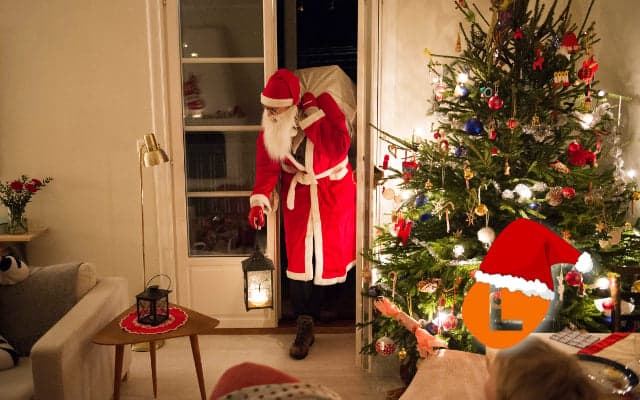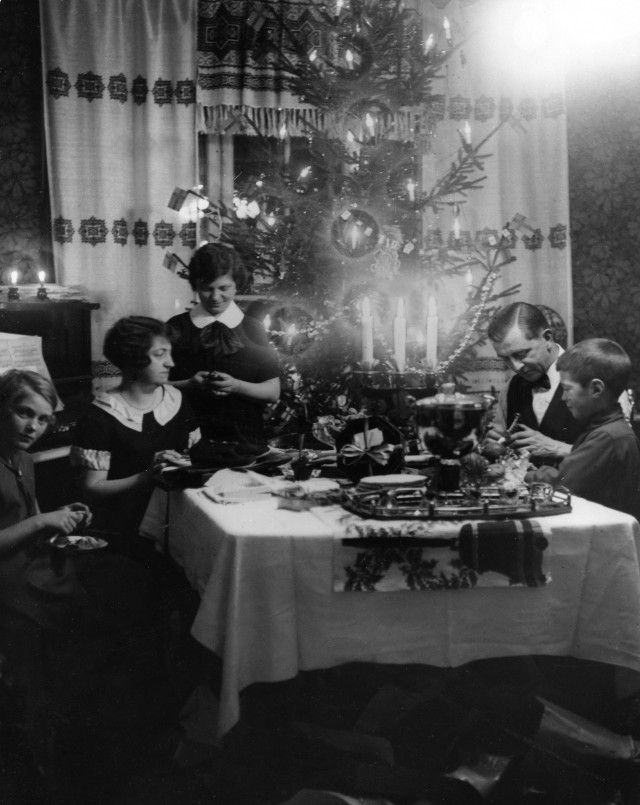#SwedishChristmas: Christmas is here… and will be for another 20 days

Every day this month, The Local has explained the unique history behind Swedish Christmas traditions in our own Advent calendar. Today we reach the grande finale.
This article is available to Members of The Local. Read more articles for Members here.
The biggest day on the Swedish Christmas calendar is finally here!
In Sweden, Julafton (Christmas Eve) is the day. Gifts are exchanged, which means a visit from jultomten, perhaps with a little help from the julbock. It is officially dopparedan (dipping day), so everyone can finally partake of dopp i grytan, which we explained yesterday, at or before the julbord.
Of course, it's the day to watch the last episode of the SVT Julkalendern, as well as to join millions of Swedes in watching Kalle Anka and friends at precisely 3.00pm. Those with real dedication might even curl up on the sofa for a marathon viewing session of Fanny and Alexander.
It's one of the most important days to read Christmas classics like Peter and Lotta's Christmas and Little Vigg's Adventures on Christmas Eve, or perhaps sit down with a good jultidning. It's also a perfect day to begin making new traditions.
Basically, it's a day to indulge in most of the traditions we've described since this Advent calendar of Swedish Christmas traditions began earlier this month. All while drinking glögg or julmust and eating a few dozen pepparkakor and maybe some juleskum, naturally.
After the celebrations of today, Christmas Day can be spent relaxing, recovering, and thinking ahead to the new year, even though the Swedish Christmas season is still far from over.
In Sweden, the long Christmas season doesn't officially end until Tjugondag Knut (literally, Twentieth Day Knut), which falls 20 days from Christmas Day on January 13th, the name day of Saint Knut. The custom of ending Christmas on this day dates back to the 1600s, and has over time incorporated traditions like the julgransplundring (literally, the plundering of the Christmas tree), which historically involved not only discarding the tree, but also eating any remaining julgodis and polkagris that might have been decorating it.
Until then, however, Christmas trees and decorations stay put, as do adventsljusstakar and adventsstjärnor, which will continue to penetrate the Nordic darkness as the days slowly begin to get longer.
It's been great fun exploring the history of Swedish Christmas traditions with you. Thanks for following along.
God jul!

A family celebrating Christmas in Sweden in 1922. Photo: Bertil Norberg/TT
Each day until Christmas Eve, we have looked at the story behind one Swedish festive tradition. Find the rest of our #SwedishChristmas series HERE.
Comments
See Also
The biggest day on the Swedish Christmas calendar is finally here!
In Sweden, Julafton (Christmas Eve) is the day. Gifts are exchanged, which means a visit from jultomten, perhaps with a little help from the julbock. It is officially dopparedan (dipping day), so everyone can finally partake of dopp i grytan, which we explained yesterday, at or before the julbord.
Of course, it's the day to watch the last episode of the SVT Julkalendern, as well as to join millions of Swedes in watching Kalle Anka and friends at precisely 3.00pm. Those with real dedication might even curl up on the sofa for a marathon viewing session of Fanny and Alexander.
It's one of the most important days to read Christmas classics like Peter and Lotta's Christmas and Little Vigg's Adventures on Christmas Eve, or perhaps sit down with a good jultidning. It's also a perfect day to begin making new traditions.
Basically, it's a day to indulge in most of the traditions we've described since this Advent calendar of Swedish Christmas traditions began earlier this month. All while drinking glögg or julmust and eating a few dozen pepparkakor and maybe some juleskum, naturally.
After the celebrations of today, Christmas Day can be spent relaxing, recovering, and thinking ahead to the new year, even though the Swedish Christmas season is still far from over.
In Sweden, the long Christmas season doesn't officially end until Tjugondag Knut (literally, Twentieth Day Knut), which falls 20 days from Christmas Day on January 13th, the name day of Saint Knut. The custom of ending Christmas on this day dates back to the 1600s, and has over time incorporated traditions like the julgransplundring (literally, the plundering of the Christmas tree), which historically involved not only discarding the tree, but also eating any remaining julgodis and polkagris that might have been decorating it.
Until then, however, Christmas trees and decorations stay put, as do adventsljusstakar and adventsstjärnor, which will continue to penetrate the Nordic darkness as the days slowly begin to get longer.
It's been great fun exploring the history of Swedish Christmas traditions with you. Thanks for following along.
God jul!

A family celebrating Christmas in Sweden in 1922. Photo: Bertil Norberg/TT
Each day until Christmas Eve, we have looked at the story behind one Swedish festive tradition. Find the rest of our #SwedishChristmas series HERE.
Join the conversation in our comments section below. Share your own views and experience and if you have a question or suggestion for our journalists then email us at [email protected].
Please keep comments civil, constructive and on topic – and make sure to read our terms of use before getting involved.
Please log in here to leave a comment.